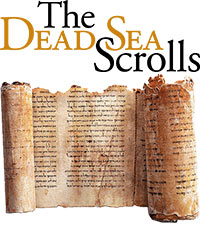June 28, 2008–January 4, 2009
The Dead Sea Scrolls — objects of great mystery, intrigue and significance — are widely acknowledged to be among the greatest archaeological treasures ever discovered.
The Dead Sea Scrolls date from 250 BCE to 68 CE and are our bridge to a period that laid the foundation of western traditions, beliefs and practices throughout the past two millennia. Among the Scrolls are some 207 biblical manuscripts that represent nearly every book in the Hebrew Bible (Christian Old Testament) and that predate any previously known copies by more than 1,000 years.
The Museum of Natural Sciences displayed 12 authentic Dead Sea Scrolls over the six month exhibition representing portions of the books of Genesis, Isaiah, Deuteronomy, Exodus and others.
Also included in the exhibition were more than 100 authentic artifacts (primarily coins and pottery) from Qumran, the ancient settlement on the northwestern shores of the Dead Sea in Israel closest to the caves where the scrolls were discovered.
In addition to biblical manuscripts, sectarian (non-biblical) manuscripts were recovered that reflect a wide variety of literary genres: biblical commentary, religious legal writings, liturgical (prayer) texts and compositions that predict a coming apocalypse. These Scrolls, some of which were on exhibit, reveal the fascinating transition between the ancient religion of the Bible and Rabbinic Judaism and Christianity.


